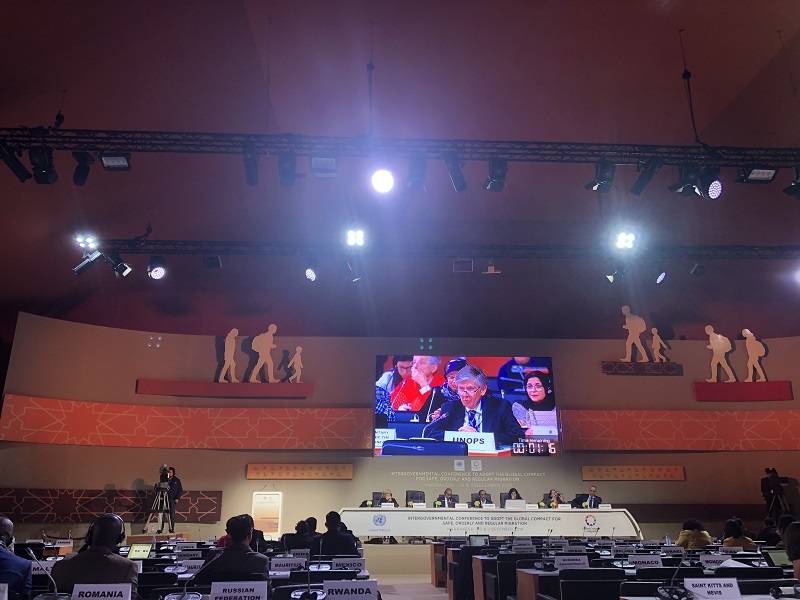The Secretariat of the Platform on Disaster Displacement is hosted by the United Nations Office for Project Services in Geneva. I am honored to deliver this statement in my capacity as Envoy of the Chair of Platform on Disaster Displacement (PDD). The Platform is a state-led process addressing the protection needs of people at risk of being displaced as well as those who are displaced in the context of disasters and adverse effects of climate change. In accordance with paragraph 18(l) of the GCM, the Platform on Disaster Displacement is ready to partner with interested stakeholders to develop coherent approaches to address the challenges of migration movements in such contexts.
 Every year, millions of people are forced to leave their homes because of floods, tropical storms, earthquakes, droughts, sea level rise, and similar hazards. Many people find refuge within their own country, but some move abroad or are displaced across international borders. In most cases, present international law does not provide a right to admission and stay for those compelled to leave their country of origin in such circumstances. Scientists project that climate change will increase disaster displacement in the future, both internally and across borders. Disaster displacement has devastating effects on people and communities. It creates complex humanitarian and development challenges that urgently call for cooperation, partnerships and action at all levels. The Global Compact for Safe, Orderly and Regular Migration is the first migration related instrument negotiated within the framework of the United Nations in which the international community makes specific commitments to address human mobility in the context of climate change and disasters.
Every year, millions of people are forced to leave their homes because of floods, tropical storms, earthquakes, droughts, sea level rise, and similar hazards. Many people find refuge within their own country, but some move abroad or are displaced across international borders. In most cases, present international law does not provide a right to admission and stay for those compelled to leave their country of origin in such circumstances. Scientists project that climate change will increase disaster displacement in the future, both internally and across borders. Disaster displacement has devastating effects on people and communities. It creates complex humanitarian and development challenges that urgently call for cooperation, partnerships and action at all levels. The Global Compact for Safe, Orderly and Regular Migration is the first migration related instrument negotiated within the framework of the United Nations in which the international community makes specific commitments to address human mobility in the context of climate change and disasters.
A particular strength of the GCM is its holistic perspective. It addresses the need for better data to support evidence-based policies. It offers hope to people at risk of being displaced by committing to invest in activities related to climate change mitigation and adaptation, disaster risk reduction and resilience building – all of which can help people to stay. The Compact further commits to helping people move out of harm’s way before disaster strikes by enhancing the availability and flexibility of pathways for regular migration. When displacement cannot be avoided, the Compact calls on States to provide temporary protection to those displaced across borders for as long as return or adaptation in the country of origin is not possible. Finally, it calls for cooperation to find durable solutions for disaster displaced persons when the country of origin has become permanently uninhabitable.
The implementation of the Compact offers a unique and historic opportunity to address the challenges of human mobility in the context of disasters and the adverse effects of climate change through effective action at sub-national, national, regional and global levels that is in line with international standards. All relevant stakeholders now need to honor the commitments made in the GCM, draw from the effective practices identified in this important document, and apply them to their specific contexts. As mentioned, we stand ready to promote and support such action.





